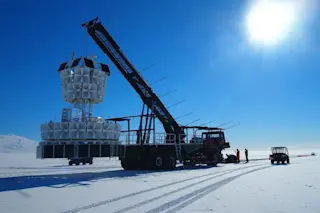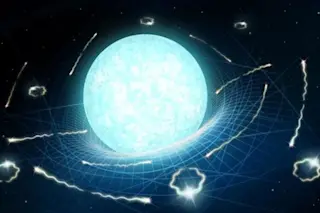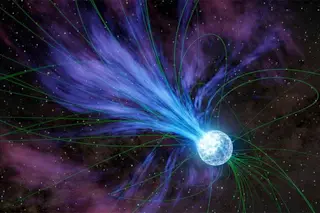What happens if you hold a slinky at the top end, let it extend, and then drop it? Here's a video setting up the problem:
[embed width="610"]http://www.youtube.com/watch?v=wGIZKETKKdw[/embed]
OK, so what do you think? Now watch this video to get the answer:
[embed width="610"]http://www.youtube.com/watch?v=eCMmmEEyOO0[/embed]
Were you correct? I'm proud to say I figured out what would happen, and even for the correct reasons. But then I'm used to problems like this; when you write a science blog you wind up thinking about how best to explain certain phenomena, and acceleration due to gravity is a common one. All parts of the slinky are accelerated by gravity equally, but the bottom of the slinky is being supported by the top. When the top is let go, it takes time for the bottom to find out, and in that time the slinky can collapse. Here's another question then: what if the slinky were ...













